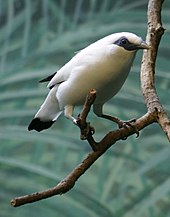http://www.indonesia-travel-guides.com/bali-island.htm
Bali is an Indonesian island located in the westernmost end of the Lesser Sunda Islands, lying between Java to the west and Lombok to the east. It is one of the country's 33 provinces with the provincial capital at Denpasar towards the south of the island (strictly speaking, the province covers a few small neighbouring islands as well as the isle of Bali).
With a population recorded as 3,891,000 in the 2010 census,[2] the island is home to most of Indonesia's small Hindu minority. In the 2000 census about 92.29% of Bali's population adhered to Balinese Hinduism while most of the remainder follow Islam. It is also the largest tourist destination in the country and is renowned for its highly developed arts, including traditional and modern dance, sculpture, painting, leather, metalworking, and music. Bali, a tourist haven for decades, has seen a further surge in tourist numbers in recent years
Agriculture
Tegalalang rice terrace in Ubud
Although tourism produces the GDP's largest output, agriculture is still the island’s biggest employer;[24][citation needed] most notably rice cultivation. Crops grown in smaller amounts include fruit, vegetables, Coffea arabica and other cash and subsistence crops.[citation needed] Fishing also provides a significant number of jobs. Bali is also famous for its artisans who produce a vast array of handicrafts, including batik and ikat cloth and clothing, wooden carvings, stone carvings, painted art and silverware. Notably, individual villages typically adopt a single product, such as wind chimes or wooden furniture.
The Arabica coffee production region is the highland region of Kintamani near Mount Batur. Generally, Balinese coffee is processed using the wet method. This results in a sweet, soft coffee with good consistency. Typical flavors include lemon and other citrus notes.[25] Many coffee farmers in Kintamani are members of a traditional farming system called Subak Abian, which is based on the Hindu philosophy of "Tri Hita Karana”. According to this philosophy, the three causes of happiness are good relations with God, other people and the environment. The Subak Abian system is ideally suited to the production of fair trade and organic coffee production. Arabica coffee from Kintamani is the first product in Indonesia to request a Geographical Indication.[26]
Language
Balinese and Indonesian are the most widely spoken languages in Bali, and the vast majority of Balinese people are bilingual or trilingual. There are several indigenous Balinese languages, but most Balinese can also use the most widely spoken option: modern common Balinese. The usage of different Balinese languages was traditionally determined by the Balinese caste system and by clan membership, but this tradition is diminishing. Sanskrit is also commonly used by some Hindu priests in Bali, for Hinduism literature was mostly written in Sanskrit.
English is a common third language (and the primary foreign language) of many Balinese, owing to the requirements of the tourism industry. Other foreign languages, such as Chinese, Japanese, Korean, French, German or Hindi are often used in multilingual signs for foreign tourists.
http://en.wikipedia.org/wiki/Bali
Senin, 21 November 2011
Langganan:
Posting Komentar (Atom)














Tidak ada komentar:
Posting Komentar